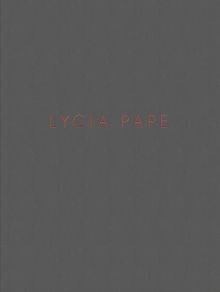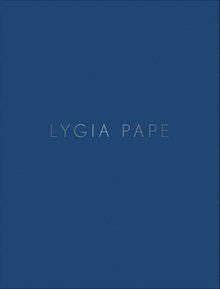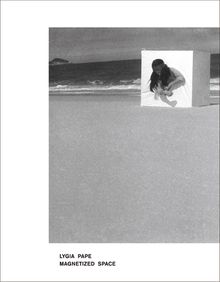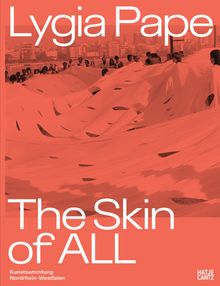ARTIST MONOGRAPHS
|
|
in stock $80.00 Free Shipping UPS GROUND IN THE CONTINENTAL U.S. |
 Lygia Pape
Lygia Pape
Published by Hauser & Wirth Publishers.
Text by Alexander Alberro. Interview with Paula Pape, Paulo Herkenhoff, Ferreira Gullar.
A founding member of Brazil’s Neoconcrete movement, Lygia Pape (1927–2004) pioneered a unique approach to abstraction and valued art that favored the primacy of viewers’ sensorial experiences. This catalog, published on the occasion of Lygia Pape’s solo exhibition at Hauser & Wirth New York in fall 2018, brings together a variety of works from the artist’s rich oeuvre, from sculptures, prints and paintings to installations and films. It focuses particularly on the series Tecelares (1952–59), Ttéias (2003) and Amazoninos (1989–2003). Designed by Damien Saatdjian, the publication includes a 2009 conversation between Pape’s daughter Paula Pape, curator Paulo Herkenhoff and poet Ferreira Gullar, as well as a newly commissioned text by art historian Alexander Alberro that explores multisensorial art with a focus on the works surveyed here.
PUBLISHER
Hauser & Wirth Publishers
BOOK FORMAT
Hardcover, 9.5 x 12.75 in. / 144 pgs / 94 color.
PUBLISHING STATUS
Pub Date 10/23/2018
Active
DISTRIBUTION
D.A.P. Exclusive
Catalog: SPRING 2019 p. 121
PRODUCT DETAILS
ISBN 9783906915142 TRADE
List Price: $45.00 CAD $62.00
AVAILABILITY
In stock
in stock $45.00 Free Shipping UPS GROUND IN THE CONTINENTAL U.S. |
 Lygia Pape
Lygia Pape
Published by Hauser & Wirth Publishers.
Text by Briony Fer, Daniel Birnbaum.
A founding member of Brazil's Neo-Concrete movement, Lygia Pape (1927–2004) made art that favored the primacy of the viewer's sensorial experience. Pape's geometric abstractions explore rich territory through sculpture, drawing, engraving, filmmaking and installation. This publication brings together works spanning 1955 to 2001. The precise incised lines of Pape's Tecelares woodcut prints and drawings of the 1950s and '60s marry pure geometry with organic patterns. Her subsequent Ttéia installations (begun in the late 1970s and continued throughout her career) present captivating explorations of geometry, space and materiality. Installation views and detail shots of these works complement texts by Briony Fer and Daniel Birnbaum, two ardent followers of Pape's work.
PUBLISHER
Hauser & Wirth Publishers
BOOK FORMAT
Clth, 9.75 x 12.75 in. / 96 pgs / 59 color / 2 bw.
PUBLISHING STATUS
Pub Date 5/23/2017
Active
DISTRIBUTION
D.A.P. Exclusive
Catalog: FALL 2017 p. 147
PRODUCT DETAILS
ISBN 9783952446133 TRADE
List Price: $45.00 CAD $60.00
AVAILABILITY
In stock
in stock $45.00 Free Shipping UPS GROUND IN THE CONTINENTAL U.S. |
 Lygia Pape: Magnetized Space
Lygia Pape: Magnetized Space
Published by JRP|Ringier.
Edited by María Luisa Blanco, Manuel J. Borja-Villel, Teresa Velásquez. Text by Ivana Bentes, Guy Brett, Lauro Cavalcanti, et al.
PUBLISHER
JRP|Ringier
BOOK FORMAT
Paperback, 8 x 10.25 in. / 420 pgs / 239 color / 108 bw.
PUBLISHING STATUS
Pub Date 3/28/2015
Active
DISTRIBUTION
D.A.P. Exclusive
Catalog: SPRING 2015 p. 131
PRODUCT DETAILS
ISBN 9783037643938 TRADE
List Price: $55.00 CAD $72.50 GBP £30.00
AVAILABILITY
In stock
in stock $55.00 Free Shipping UPS GROUND IN THE CONTINENTAL U.S. |

